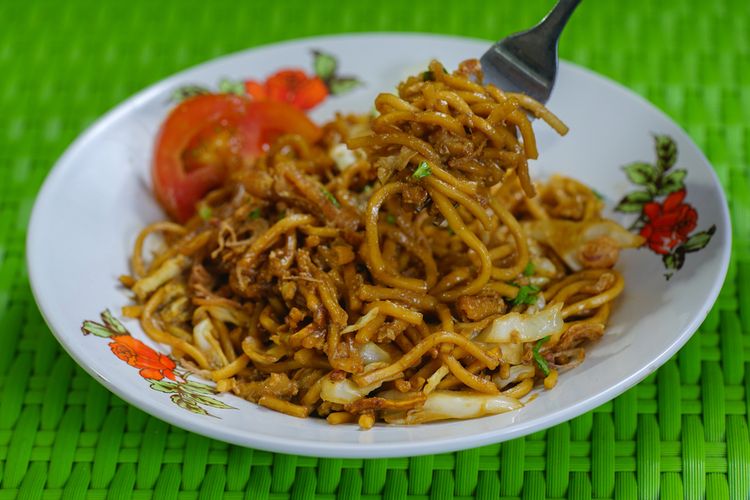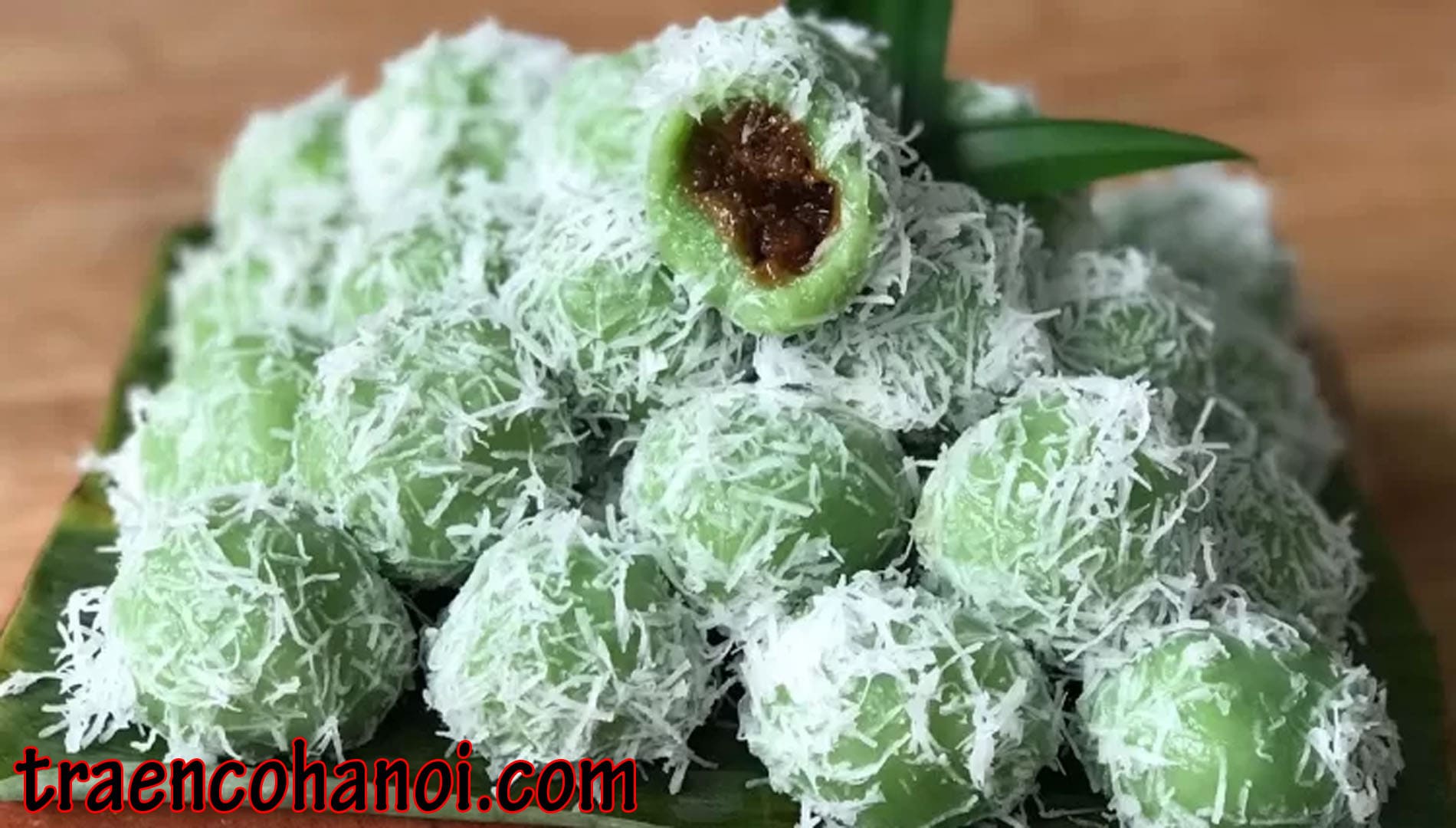
Klepon: The Emerald Jewel and Sweet Surprise of the Indonesian Archipelago
Imagine a small, vibrant green sphere, no larger than a quail’s egg, nestled in a soft bed of snowy white coconut flakes. It appears unassuming, a simple confectionary dot on a plate. But to lift it, to bring it to your lips, is to prepare for a multi-sensory experience that encapsulates the very soul of Indonesian culinary philosophy. This is Klepon, a seemingly modest sweet that holds within its chewy walls a burst of liquid joy, a story of terroir, and a deep-rooted cultural significance that has enchanted generations.
At its core, Klepon is a type of kue, the Indonesian umbrella term for a vast array of cakes, pastries, and sweets. Specifically, it belongs to the category of jajanan pasar, or "market snacks"—affordable, traditional delicacies typically sold in bustling morning markets across the nation. To bite into one is to experience a delightful sequence of sensations. First, the soft, savoury texture of the freshly grated coconut, often lightly steamed with a pinch of salt to enhance its flavour. This is immediately followed by the yielding, chewy bite of the glutinous rice flour dough. And then, the climax: a sudden, surprising explosion of warm, liquid palm sugar that floods the palate with its deep, smoky, caramel-like sweetness. It is this "sweet surprise" that defines the Klepon experience, a moment of pure, unadulterated pleasure.
The Sacred Trinity of Ingredients
The magic of Klepon lies not in complexity, but in the perfect harmony of a few, high-quality, quintessentially Southeast Asian ingredients. Understanding these components is to understand the essence of the sweet itself.
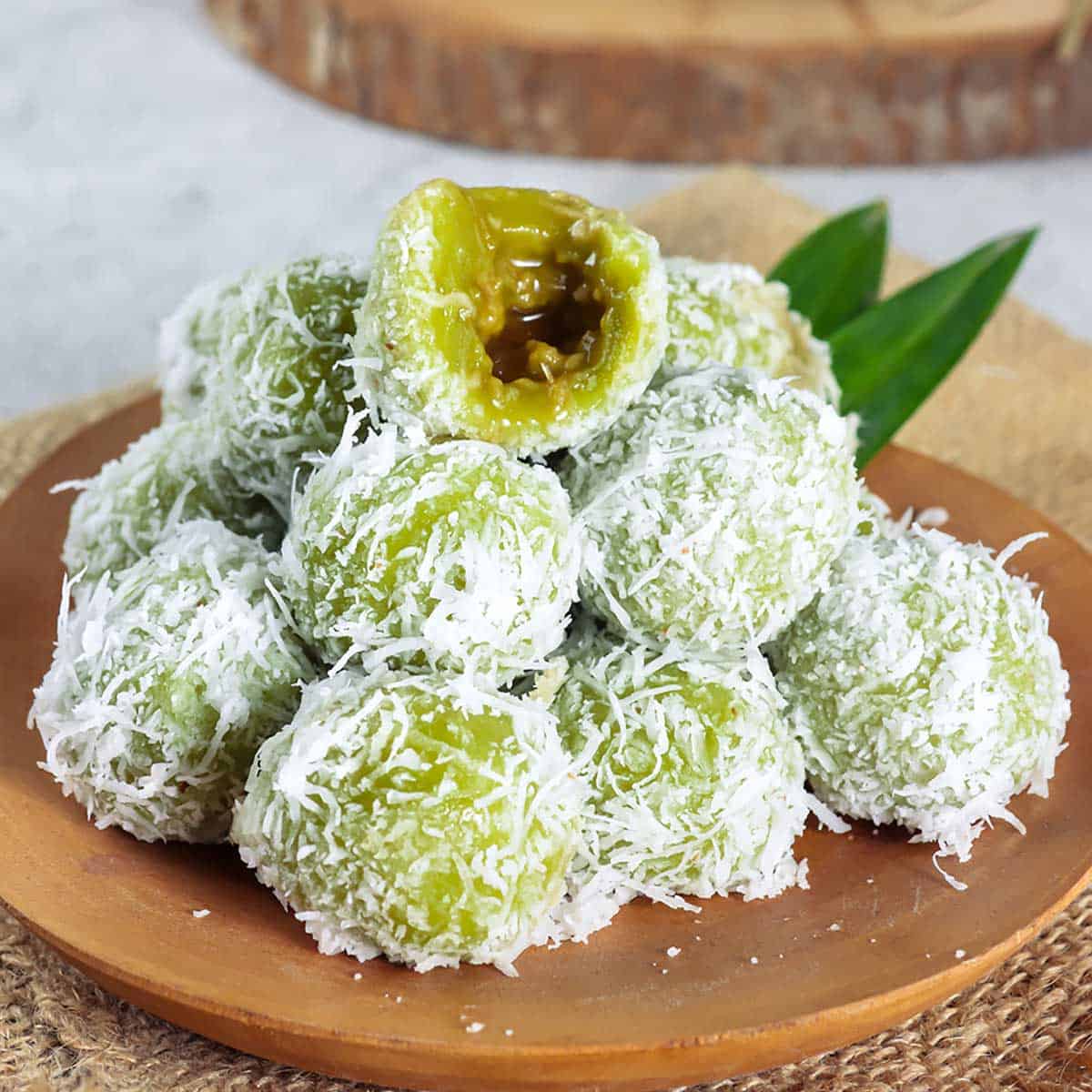
1. Glutinous Rice Flour (Tepung Ketan): This is the foundation, the very body of the Klepon. Made from milled glutinous rice (which, despite its name, is gluten-free), this flour is prized for its high starch content, which creates a uniquely sticky and chewy texture when cooked. This texture, known in Japanese as mochi-mochi, is beloved across Asia. The flour is mixed with water to form a pliable dough, the perfect vessel to contain the precious liquid filling.
2. Pandan Leaf (Daun Pandan): Often called the "vanilla of Southeast Asia," the pandan leaf is the soul of Klepon. Its long, blade-like leaves are pounded or blended with water to create a fragrant, naturally green extract. This extract imparts not only the iconic emerald hue but also a subtle, grassy, and wonderfully aromatic flavour that is both fresh and comforting. While modern shortcuts may involve artificial green food colouring and pandan essence, a truly authentic Klepon derives its character from the fresh juice of the leaf, a scent that instantly transports one to a tropical Indonesian garden.
3. Palm Sugar (Gula Merah): This is the heart of Klepon, its liquid gold. Known as gula merah ("red sugar") or gula Jawa ("Javanese sugar"), this is not your everyday refined sugar. It is harvested from the sap of various palm trees, most commonly the coconut or arenga palm. The sap is slowly boiled down in large vats until it thickens into a dark, rich syrup, which is then poured into bamboo or coconut shell molds to solidify. The resulting sugar has a complex flavour profile—less cloyingly sweet than white sugar, with deep notes of caramel, smoke, and even a hint of coffee. For Klepon, this solid sugar is finely shaved or chopped, packed tightly into the center of the dough ball, where it melts into a luscious syrup during the brief boiling process.
The final touch, the freshly grated coconut, serves as more than just a coating. Its savoury, slightly fatty profile provides a crucial counterbalance to the intense sweetness of the palm sugar filling, creating a perfectly balanced bite where no single flavour overwhelms the others.
A Journey Through Time and Culture

Klepon is believed to have originated in Java, the cultural and demographic heart of Indonesia. As a quintessential jajanan pasar, it has been a part of daily life for centuries, enjoyed as a light breakfast, an afternoon snack with tea, or as part of a celebratory platter. Its simple, natural ingredients reflect a time when cuisine was dictated by the immediate environment—rice paddies, coconut groves, and sugar palms.
Interestingly, the nomenclature can cause some confusion in the region. In parts of Malaysia, Singapore, and even in some Indonesian regions like Sumatra, this same sweet is known as "Onde-onde." However, in Java and for most Indonesians, "Onde-onde" refers to a completely different snack: a larger, deep-fried glutinous rice ball coated in sesame seeds and filled with a sweet mung bean paste. This linguistic divergence highlights the rich, interconnected, yet distinct culinary tapestry of the Malay Archipelago.
In recent years, Klepon became the unlikely subject of a social media firestorm. A viral meme provocatively declared that Klepon was "not an Islamic cake," suggesting it was somehow alien to the country’s majority religion. The claim was widely ridiculed and condemned by Indonesians from all walks of life, who rallied in defense of their beloved snack. The controversy, though absurd, inadvertently reinforced Klepon’s status as a unifying cultural icon—a food that transcends religious and social divides, belonging to everyone. It is a testament to how deeply food is woven into the national identity.
The Art of Making Klepon: A Simple Guide
Making Klepon at home is a rewarding process that connects one to the heart of Indonesian tradition.
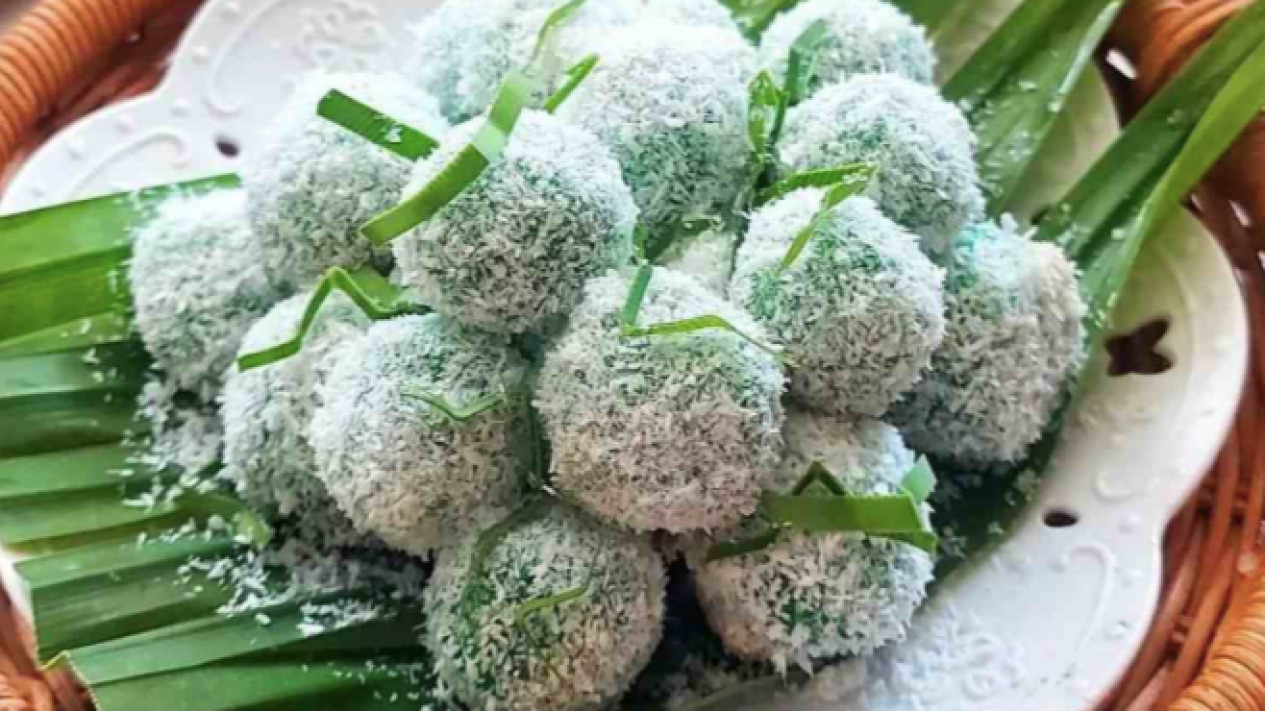
Ingredients:
- 250g glutinous rice flour
- 50g regular rice flour (for a slightly firmer texture)
- 200ml pandan juice (made by blending 10 pandan leaves with 220ml water, then straining)
- A pinch of salt
- 150g dark palm sugar (gula merah), finely chopped
- 200g freshly grated coconut
- 1/2 tsp salt (for the coconut)

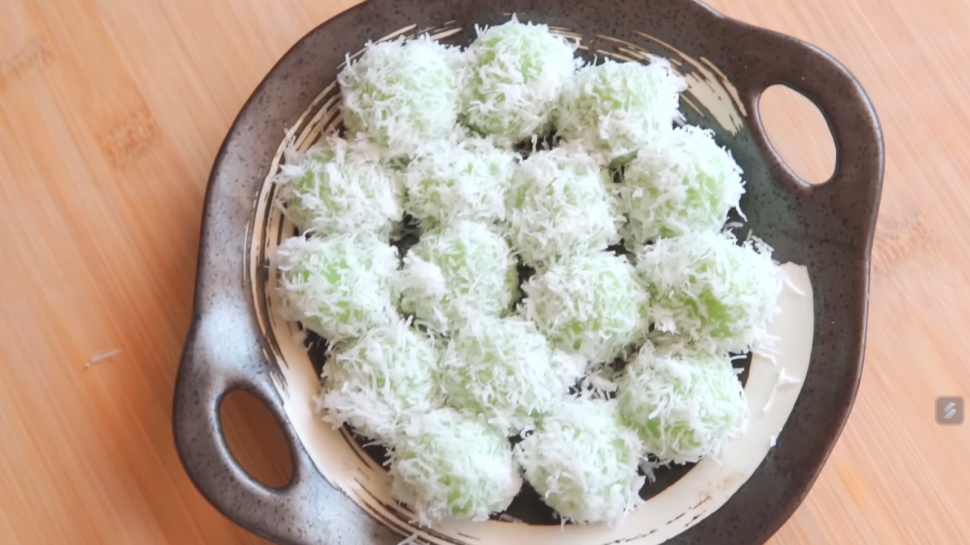
Instructions:
- Prepare the Coconut: Mix the freshly grated coconut with 1/2 teaspoon of salt. Steam it for about 10 minutes. This prevents it from souring quickly and enhances its flavour. Set aside to cool on a flat plate.
- Make the Dough: In a large bowl, combine the glutinous rice flour, regular rice flour, and a pinch of salt. Gradually pour in the warm pandan juice while mixing with your hand. Knead gently until you have a smooth, pliable dough that doesn’t stick to the bowl.
- Shape the Balls: Take a small portion of dough (about 15g) and roll it into a ball. Flatten it in your palm to create a small disc. Place about half a teaspoon of the chopped palm sugar in the center. Carefully enclose the sugar, pinching the seams together firmly to seal it. Roll it gently between your palms to form a perfect sphere. Repeat until all the dough and sugar are used.
- Boil: Bring a large pot of water to a rolling boil. Carefully drop the Klepon balls into the water one by one. Do not overcrowd the pot. The Klepon will initially sink. After a few minutes, they will float to the surface, which is the sign that they are cooked through and the sugar inside has melted.
- Coat and Serve: Using a slotted spoon, remove the cooked Klepon from the pot, drain them well, and immediately roll them in the prepared steamed coconut until they are evenly coated. Serve at room temperature.
Klepon Reimagined
While the classic pandan-and-palm-sugar Klepon remains the undisputed champion, its beloved status has inspired a wave of modern creativity. Chefs and home bakers alike are reinterpreting this traditional sweet. You can now find Klepon made with purple sweet potato (ubi ungu) or butterfly pea flower (bunga telang) for stunning violet and blue hues. The fillings have also been updated, with some versions featuring molten dark chocolate, creamy cheese, or even durian paste.
This innovation has moved beyond the small sphere itself. The "Klepon flavour" has become a phenomenon, inspiring deconstructed desserts, magnificent multi-layered Klepon cakes, creamy Klepon lattes, and even artisanal ice cream. These modern takes are a tribute to the original, introducing its unforgettable flavour combination to a new generation and a global audience.
Ultimately, whether in its traditional form sold on a banana leaf in a bustling Javanese market or as a sophisticated entremet in a high-end Jakarta café, Klepon remains more than just a snack. It is a bite of history, a taste of the archipelago’s fertile land, and a symbol of simple, unadulterated joy. It is the emerald jewel of Indonesian sweets, offering a promise with its vibrant colour and delivering it with a delightful, sweet surprise.

Klepon: The Emerald Jewel and Sweet Surprise of the Indonesian Archipelago pictures collections gallery
Klepon: The Emerald Jewel and Sweet Surprise of the Indonesian Archipelago is a nice pictures and stock photo for your computer desktop or your smartphone device (ipad, tablet, blackberry, iphone, and other device) and also for your personal use. Free available for desktop wallpaper or additional image collections for your all needs. And was uploaded by at date July 1, 2025. You can download it in your computer by clicking download button to save image... have nice day and have fun guys..
This 1 image in featured post from 0 Photos/images Gallery and awesome picture selections about Klepon: The Emerald Jewel and Sweet Surprise of the Indonesian Archipelago is available to download. "Download & Save" images/pictures/wallpapers now and this Is one of the post that listed in packed to Category is Foods directory, with image dimension/resolution size is 1900 × 1080 px and size image/picture file is 189 KB with original link post ID is : https://powae.pw/klepon-the-emerald-jewel-and-sweet-surprise-of-the-indonesian-archipelago/. Get download/save images in post and gallery, "download" images or "preview" it on a bigger image for spesification sample in Large size (full attachment size) here : [Download & View to Large size]. Just Simple way, in thumbnail or in Gallery. *Click images to view Large Size.We collect this wonderful image from online and choose one of the best for you. Pictures collection that posted here was carefully chosen and published by author after choosing the ones which are best among the others. So, ultimately we make it and here these list of best image for your inspiration and informational reason regarding the Klepon: The Emerald Jewel and Sweet Surprise of the Indonesian Archipelago as part of blogsite exclusive updates collection. So, take your time and find the best informations and pictures posted here that suitable with your needs and use it for your own collection and personal use. About Image information: Image has been submitted and You are able to give your opinion as evaluations to our web site value.
Don't forget to comment if you interest with this images, you can share this post to social media like as facebook, twitter, google+, pinterest, stumbleupon, and more. just click social media buttons for share this post Klepon: The Emerald Jewel and Sweet Surprise of the Indonesian Archipelago Now. :)
Thanks for your visit, I hope you happy come to opo wae, wis opo wae, and get what you're looking for. And hope sometimes you will come back again here. All you need to do is help us develop by discussing this Klepon: The Emerald Jewel and Sweet Surprise of the Indonesian Archipelago if you like it "leave your comment". have fun, Thank you.



